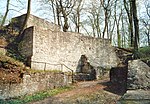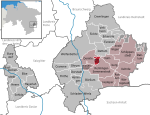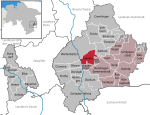Bundesamt für Strahlenschutz
1989 establishments in GermanyEnvironment of GermanyNuclear organizationsOrganisations based in Lower SaxonyOrganizations established in 1989 ... and 2 more
Radiation protection organizationsSalzgitter

The Bundesamt für Strahlenschutz (BfS) is the German Federal Office for Radiation Protection. The BfS was established in November 1989; the headquarters is located in Salzgitter, with branch offices in Berlin, Bonn, Freiburg, Gorleben, Oberschleißheim and Rendsburg. It has 708 employees (including 305 scientific) and an annual budget of around 305 million Euro (2009). Since 2009 the BfS is also responsible for the storage site of radioactive waste, Schacht Asse II.
Excerpt from the Wikipedia article Bundesamt für Strahlenschutz (License: CC BY-SA 3.0, Authors, Images).Bundesamt für Strahlenschutz
K 628, Samtgemeinde Sickte
Geographical coordinates (GPS) Address Nearby Places Show on map
Geographical coordinates (GPS)
| Latitude | Longitude |
|---|---|
| N 52.151138888889 ° | E 10.664333333333 ° |
Address
K 628
38173 Samtgemeinde Sickte
Lower Saxony, Germany
Open on Google Maps







